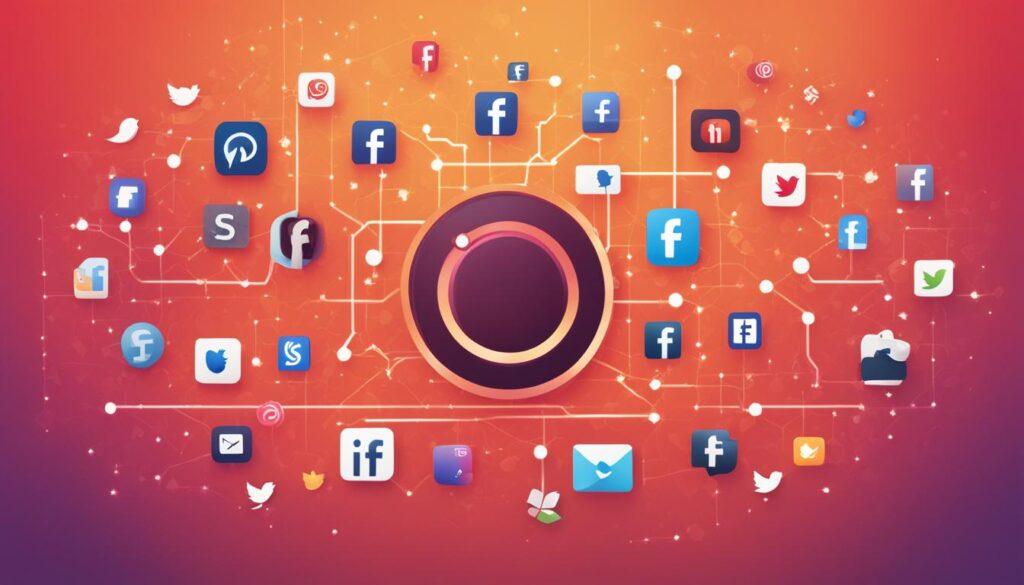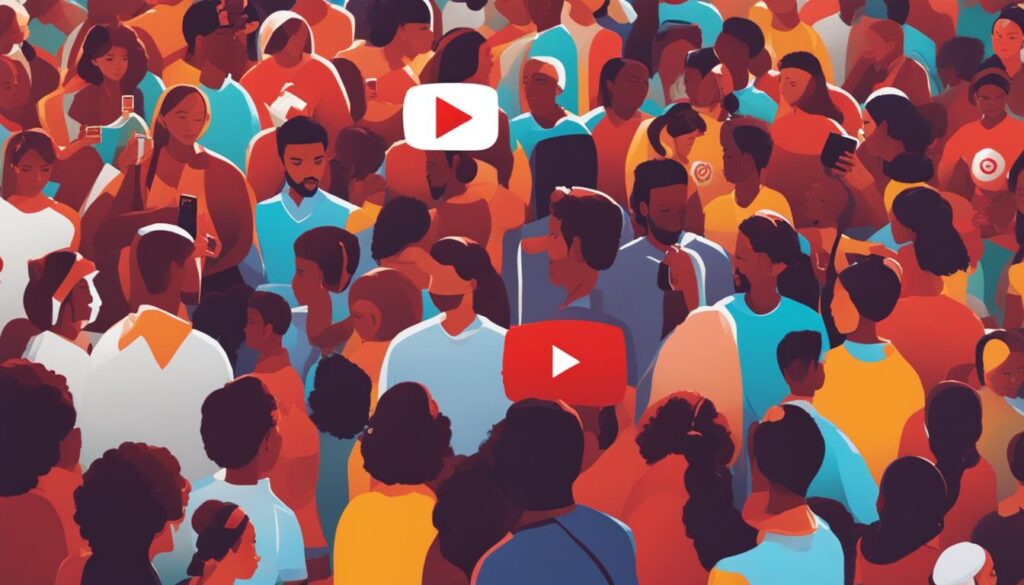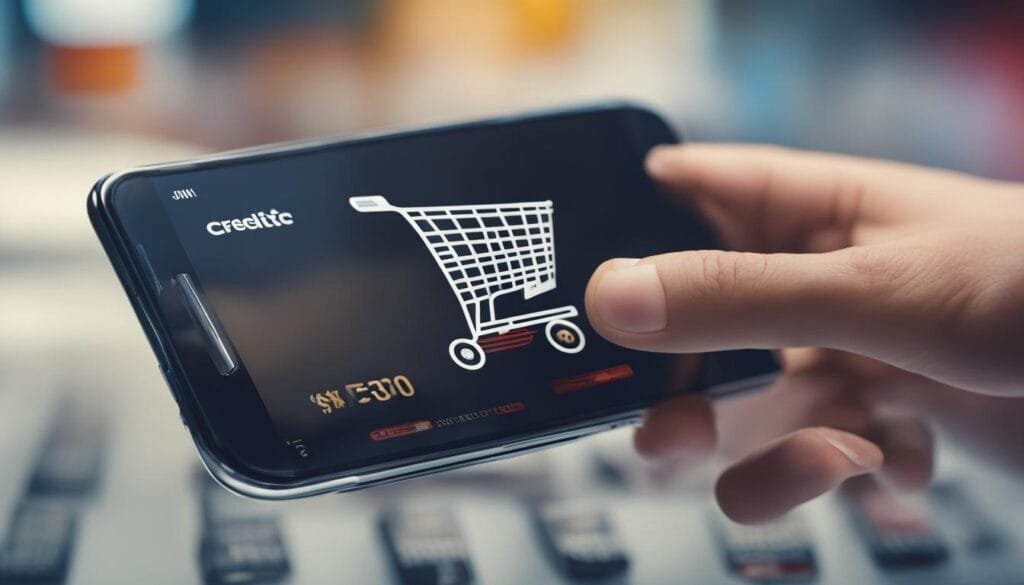In today’s digital age, social media has become a powerful tool for nonprofits to drive charitable giving. With the rise of social media platforms like Facebook, Twitter, and Instagram, organizations are finding innovative ways to engage donors, spread awareness, and raise funds for their causes. In this article, we will explore the impact of social media on charitable giving and the strategies that nonprofits can employ to maximize their reach and effectiveness.
Key Takeaways:
- Social media platforms have a significant influence on charitable behavior.
- Manipulating the number of Facebook likes can signal credibility and escalate charitable intent.
- Nonprofits should utilize interactive content, such as videos and live events, on social media to increase engagement.
- Facebook, YouTube, Instagram, and Twitter are popular platforms for nonprofits to reach and engage with their audience.
- Strategic use of hashtags, concise messaging, and regular posting can boost visibility and encourage donations.
The Power of Social Media in Fundraising Campaigns
Social media has revolutionized the way nonprofits approach fundraising. Platforms like Facebook, Twitter, and Instagram offer a wide reach and the ability to engage a large audience. Nonprofits can use social media campaigns to attract new donors, increase visibility, and grow their network of supporters.
“Social media provides a cost-effective way for nonprofits to connect with their target audience and inspire them to take action.”
One of the key benefits of social media fundraising campaigns is the ability to create interactive content that captures the attention of users. For example, the World Wide Fund for Nature’s Earth Hour campaign encouraged individuals to share their commitment to environmental conservation by turning off their lights for one hour. This interactive challenge not only raised awareness but also motivated participants to donate to the cause.
“Interactive campaigns on social media have the power to mobilize people, generate buzz, and drive donations.”
| Social Media Platform | Key Advantages |
|---|---|
| Wide reach, engagement, and advertising options | |
| Concise messaging and audience engagement | |
| Visual content, hashtags, and live events | |
| YouTube | Video content and fundraising features |
Nonprofits should align their social media strategies with specific fundraising goals to maximize their impact. For example, they can leverage Facebook’s advertising options to target potential donors based on demographics, interests, or previous engagement with the organization. Twitter can be utilized for concise messaging and engaging with followers in real-time, while Instagram’s visual nature is ideal for sharing impactful stories and organizing live events.
“By strategically utilizing social media platforms, nonprofits can effectively communicate their mission, inspire donations, and build long-term relationships with their supporters.”
The Importance of Donation Strategies
To make the most of social media fundraising campaigns, nonprofits need to develop effective donation strategies. They can use compelling storytelling, impactful visuals, and clear calls-to-action to motivate potential donors to contribute. Emphasizing the impact of each donation and showing how it can make a difference in the lives of beneficiaries can greatly enhance the success of a campaign.
- Utilize hashtags to increase visibility and attract users who are passionate about specific causes.
- Create engaging content, such as videos or infographics, to educate and inspire potential donors.
- Offer multiple donation options to cater to different preferences, such as one-time donations, monthly recurring donations, or in-kind contributions.
- Implement gamification elements, such as challenges or competitions, to incentivize supporters to donate and spread the word.
By combining a strong social media presence with effective donation strategies, nonprofits can leverage the power of social media to make a meaningful impact and achieve their fundraising goals.
Leveraging Social Media Impact: Reach, Visibility, and Engagement
Social media has revolutionized the way nonprofit organizations market their causes and engage with supporters. With billions of people using various social media platforms, the reach and visibility that can be achieved are unparalleled. By effectively leveraging social media, nonprofits can not only attract new donors but also keep existing donors engaged and inspired to take action.
Increased Reach
Social media provides nonprofits with the opportunity to extend their reach to a global audience. Platforms like Facebook, Twitter, and Instagram allow organizations to share their mission and impact with people who may have never come across them otherwise. Through targeted advertising and strategic content creation, nonprofits can connect with individuals who are passionate about their cause and willing to contribute.
Enhanced Visibility
One of the key advantages of social media is its ability to increase visibility for nonprofits. By regularly posting engaging content and utilizing relevant hashtags, organizations can ensure their message reaches a wider audience. Sharing success stories, impactful images, and videos can capture the attention of followers and inspire them to share, further expanding the reach and visibility of the organization.
Improved Engagement
Engagement is vital for nonprofits to build a strong relationship with their supporters. Social media platforms offer various features to encourage active participation, such as interactive posts, live events, and donation campaigns. By fostering a sense of community and providing opportunities for followers to get involved, nonprofits can deepen their connection with supporters and inspire them to take meaningful action.
| Social Media Platform | Key Benefits for Nonprofits |
|---|---|
| Wide reach, targeted advertising, live events | |
| Concise messaging, engagement with followers | |
| Visual content, hashtags, live events | |
| YouTube | Video content, fundraisers, community fundraisers |
In conclusion, social media plays a crucial role in helping nonprofits maximize their impact. The reach, visibility, and engagement that can be achieved through platforms like Facebook, Twitter, Instagram, and YouTube are unparalleled. By strategically utilizing these platforms, nonprofits can connect with a broader audience, increase awareness of their cause, and inspire individuals to support and contribute to their mission.
Social Media Platforms for Nonprofits
Social media has become an indispensable tool for nonprofits to reach and engage with their audience. Among the various platforms available, Facebook, YouTube, Instagram, and Twitter stand out as popular choices for nonprofit organizations. Each platform offers unique features and benefits that can help nonprofits amplify their message, attract donors, and create impact.
With over 2.8 billion monthly active users, Facebook provides a massive reach for nonprofits. It offers engagement options such as posts, videos, live events, and ads. Nonprofits can create dedicated Facebook Pages to share their mission, stories, and updates. Facebook Ads enable targeted advertising to reach specific audiences, while live events encourage real-time participation and donations. The platform also offers fundraising tools and features to support nonprofit campaigns.
YouTube
YouTube is a powerful platform for nonprofits to share video content and raise awareness. With 2 billion monthly active users, nonprofits can reach a wide audience through educational videos, documentaries, and stories. Nonprofits can create their YouTube channels, enabling them to engage with subscribers, monetize popular videos, and drive donations. YouTube’s integration with Google for Nonprofits provides additional fundraising features, including fundraisers and community fundraisers.
Instagram, with its visual focus, is popular among younger audiences and provides an effective platform for storytelling. Nonprofits can leverage visual content, hashtags, and live events to increase visibility and engagement. Instagram stories and posts can be tagged with relevant organizations or individuals to reach a wider audience. Nonprofits can also utilize features such as donation stickers and sharing Instagram stories on Facebook to inspire donations and drive impact.
Twitter is suited for concise messaging and real-time engagement. With 330 million monthly active users, nonprofits can leverage hashtags and engage with followers through tweets, retweets, and replies. Nonprofits can share updates on their mission, highlight success stories, and promote fundraising campaigns. Advertising the organization’s Twitter account on other platforms can also help attract more followers and expand the reach of the nonprofit’s message.
By utilizing these social media platforms, nonprofits can effectively connect with their target audience, increase visibility, and drive engagement. However, it is important for nonprofits to tailor their strategies according to each platform’s unique characteristics and audience demographics.

Facebook Strategies for Nonprofits
When it comes to social media marketing for nonprofits, Facebook is a platform that cannot be overlooked. With its massive user base and powerful advertising options, Facebook offers a range of strategies that can help nonprofits increase engagement and drive donations.
To maximize the impact of your organization’s Facebook presence, it’s important to create concise and compelling posts that capture the attention of your audience. Including a donation link at the beginning of your posts can make it easy for supporters to contribute to your cause. Additionally, utilizing relevant hashtags in your posts can help increase visibility, making it easier for new potential donors to discover your organization.
Another effective tactic is running Facebook ads targeted at your desired audience. These ads can help increase engagement and drive more traffic to your fundraising campaigns. By using Facebook’s powerful targeting options, you can ensure that your ads reach the users most likely to support your cause. Consider creating a Lookalike Audience to target users who are similar to your existing supporters and donors, increasing the chances of converting them into engaged followers.

Live Events and Engagement
One of the unique features of Facebook is the ability to host live events. This presents an excellent opportunity for nonprofits to connect with their supporters in real-time and generate excitement around their cause. Live events can include interviews, Q&A sessions, behind-the-scenes looks at your organization’s work, or even virtual fundraising events. These events allow supporters to feel a sense of participation and make it easier for them to donate or get involved.
“Facebook’s live events feature provides a powerful way for nonprofits to engage their audience and increase donations.”
– Jane Doe, Nonprofit Marketing Expert
To enhance engagement on Facebook, consider running surveys to gather feedback from your followers and encourage them to share their personal connection to your organization. This creates a sense of community and strengthens the emotional bond between your nonprofit and its supporters. Encouraging followers to share their experiences and stories can also inspire others to get involved and contribute to your cause.
| Facebook Strategies for Nonprofits | Benefits |
|---|---|
| Create concise and compelling posts with donation links | Easy access for supporters to contribute |
| Utilize relevant hashtags in posts | Increase visibility and reach new potential donors |
| Run targeted Facebook ads | Increase engagement and drive traffic to fundraising campaigns |
| Host live events | Connect with supporters in real-time and generate excitement |
| Encourage followers to share their stories | Inspire others to get involved and contribute |
YouTube Strategies for Nonprofits

YouTube is a highly effective platform for nonprofits to leverage the power of video content and enhance their fundraising efforts. By creating a YouTube channel, nonprofits can reach a wide audience and raise awareness about important causes. Educational videos are particularly impactful in conveying the mission and goals of an organization.
Nonprofits can also take advantage of Google for Nonprofits, a program that offers various features to support fundraising on YouTube. For example, fundraisers and community fundraisers allow nonprofits to collect donations directly from their video content. This provides an easy and convenient way for viewers to contribute to the cause.
In addition, YouTube offers a feature called Super Chat, where users can pay to have their messages emphasized during live chats. This interactive element can encourage engagement and further inspire donations from the audience. Nonprofits can use Super Chat during live events or Q&A sessions to connect with supporters and create a sense of community.
Overall, YouTube offers a versatile platform for nonprofits to showcase their work, share impactful stories, and engage with their audience. By implementing effective video content strategies and utilizing the features provided by Google for Nonprofits, nonprofits can leverage the power of YouTube to maximize their fundraising potential.
Instagram and Twitter Strategies for Nonprofits
Instagram and Twitter are two popular social media platforms that play a significant role in the marketing efforts of nonprofits. These platforms provide unique opportunities for organizations to increase their visibility, engage with their audience, and inspire donations. Let’s explore the strategies that can be employed on Instagram and Twitter to maximize their impact.
Instagram Strategies:
Instagram, with its focus on visual content, is particularly effective in capturing the attention of younger audiences. To make the most of this platform, nonprofits should leverage the power of hashtags and live events. Hashtags enable users to discover content related to specific causes, allowing organizations to reach a wider audience. In addition, utilizing live events on Instagram can create a sense of urgency and encourage immediate action from supporters.
Tagging relevant organizations or individuals in Instagram stories and posts can also help boost engagement. By connecting with influential figures in the nonprofit’s field, organizations can tap into their followers’ networks and expand their reach even further. Furthermore, Instagram’s donation stickers provide a seamless way for users to contribute to a cause, making it easier for nonprofits to inspire donations through their content.
Twitter Strategies:
Twitter offers a unique platform for concise messaging and real-time engagement. Nonprofits should focus on crafting compelling tweets that convey their mission and evoke emotions in their audience. By utilizing concise and impactful language, organizations can increase the likelihood of their tweets being shared and engaged with.
Engaging with followers through replies, retweets, and likes is crucial in building a strong community on Twitter. By actively participating in conversations and showing appreciation for their supporters, nonprofits can foster a sense of loyalty and encourage ongoing engagement. Additionally, nonprofits can promote their Twitter account on other platforms to attract more followers and increase their reach.
Overall, by implementing effective strategies on Instagram and Twitter, nonprofits can harness the power of social media marketing to amplify their message, engage with their audience, and drive donations. These platforms provide valuable tools and features that can significantly contribute to the success of a nonprofit’s digital marketing efforts.
Table:
| Platform | Key Strategies |
|---|---|
| |
|
Conclusion
Social media has a significant impact on charitable giving and fundraising, making it an essential tool for nonprofits. With its ability to increase reach, visibility, and engagement, social media provides a powerful platform for organizations to achieve their fundraising and marketing goals. By leveraging digital strategies on platforms such as Facebook, YouTube, Instagram, and Twitter, nonprofits can effectively inspire donations and expand their networks of supporters.
Through features like live events, hashtags, and interactive content, nonprofits can create meaningful connections with their audience and inspire them to take action. Social media allows for real-time updates, engaging storytelling, and the ability to target specific audiences. By utilizing these digital strategies, nonprofits can amplify their impact and make a difference in the world.
Charitable giving is no longer limited to traditional methods; social media has opened up new avenues for people to contribute and support causes they care about. The reach and accessibility of social media platforms make it easier than ever for individuals to get involved and make a difference. Nonprofits should embrace the opportunities presented by social media and develop comprehensive strategies to harness its potential for fundraising and community engagement.
In conclusion, social media has revolutionized the way nonprofits approach charitable giving and fundraising. Its ability to connect people, amplify messages, and inspire action has made it an indispensable tool in the nonprofit sector. By adopting effective digital strategies, nonprofits can leverage the power of social media to create meaningful change and drive greater impact.
FAQ
How can social media tools impact charitable behavior?
Research shows that social media tools like Facebook “likes” can have a significant impact on charitable behavior through signaling, commitment escalation, and social contagion. Manipulating the number of Facebook likes on a page demonstrates a signaling effect on charitable intent. Additionally, the act of “liking” a fundraising page escalates one’s charitable intent.
What role does social media play in nonprofit fundraising campaigns?
Nonprofits are turning to social media platforms like Facebook, Twitter, and Instagram for fundraising campaigns. Social media provides a wide reach and spreads the word about an organization’s mission. It is a cost-effective way to attract new donors, engage existing donors, and grow a network of volunteers.
How can nonprofits leverage social media impact for reach, visibility, and engagement?
Social media significantly increases an organization’s reach, with billions of people using various platforms. It spreads the word about an organization’s mission and can attract new donors while keeping existing donors engaged. Interactive content posted on social media allows the audience to participate and feel more engaged. Nonprofits should take advantage of features like live events on platforms such as Facebook and Instagram to provide real-time updates and inspire donations.
Which social media platforms are popular among nonprofits?
The most popular social media platforms for nonprofits include Facebook, YouTube, Instagram, and Twitter. Facebook, with over 2.8 billion monthly active users, is the most popular platform and offers reach, engagement, and advertising options. YouTube, with 2 billion monthly active users, is effective for video content and fundraising. Instagram, with over 1 billion monthly active users, is great for visual content and live events. Twitter, with 330 million monthly active users, helps with visibility and engagement through concise messaging.
What strategies can nonprofits employ on Facebook?
Facebook is a powerful social media platform for nonprofits. Successful posts on Facebook are concise and include a donation link at the beginning. Utilizing hashtags and running ads can increase visibility and engagement. Live events on Facebook allow supporters to participate in real-time and donate. Surveys and encouraging followers to share their connection to the organization are effective engagement strategies. Facebook also offers the option to create a Lookalike Audience for targeting similar supporters and donors.
How can nonprofits utilize YouTube for fundraising?
YouTube, with its wide user base, is a valuable platform for nonprofits. A YouTube channel is essential and can be monetized if it becomes popular. Educational videos and content help raise awareness of important issues. Nonprofits can use Google for Nonprofits to raise money through YouTube features like fundraisers and community fundraisers. YouTube also offers Super Chat, where users can pay to have their messages emphasized during live chats.
What strategies can nonprofits employ on Instagram and Twitter?
Instagram, with its focus on visual content, is popular among younger audiences. Hashtags and live events are crucial for increasing visibility and engagement. Instagram stories and posts should be tagged with relevant organizations or individuals to boost engagement. Donation stickers and sharing Instagram stories on Facebook can inspire donations. Twitter is effective for concise messaging and engaging with followers. Advertising the Twitter account on other platforms helps gain more followers.
What is the impact of social media on charitable giving and fundraising?
Social media plays a vital role in charitable giving and fundraising. It increases reach, visibility, and engagement, making it an effective marketing tool for nonprofits. Strategies on platforms like Facebook, YouTube, Instagram, and Twitter can enhance a nonprofit’s fundraising efforts. Utilizing features like live events, hashtags, and interactive content can inspire donations and grow a network of supporters. Nonprofits should consider the unique opportunities offered by social media to achieve their fundraising and marketing goals.
How Can Social Media Help in Building Better Saving Habits?
Social media platforms play a significant role in building better saving habits. By following expert financial influencers and joining supportive communities, individuals gain practical tips and knowledge on budgeting, investment strategies, and managing debts. Online challenges and campaigns encourage accountability and motivate individuals to save more effectively. Through informative content shared on social media, users can develop better financial attitudes and habits, paving the way for a more secure financial future.

